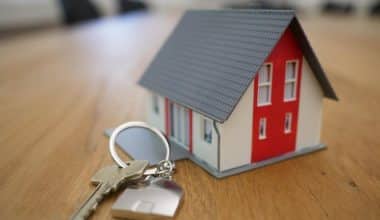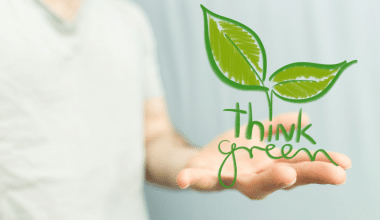One of the measures that has become indispensable for policymakers, businesses, and investors alike is the business cycle. The business cycle, with its alternating periods of expansion and contraction, shapes the trajectory of economic activity, impacting decision-making processes, risk management strategies, and accurate economic forecasting. Like a rhythmic pattern, it’s responsible for economic growth and decline, and this guides the overall health of an economy. When these various phases are critically examined, policymakers gain valuable insights that aid in formulating effective economic policies and regulatory measures. These policies, be they fiscal or monetary, play a pivotal role in stabilizing economies during times of contraction, stimulating growth during periods of expansion, and ensuring the overall well-being of a nation’s financial system. That’s to say that the business cycle, with its phases and stages, affects everyone in society.
Business Cycle and How it Affects Us
The business cycle refers to the natural rise and fall of economic activity over time. It consists of four main phases: expansion, peak, contraction, and trough. During expansion, the economy grows with increased production, employment, and consumer spending. The peak is the highest point of growth. After the peak, the economy enters a contraction phase, known as a recession, characterized by a decline in economic activity. Lastly, is the trough which is the lowest point of the recession. From the trough, the economy starts to recover and enters a new expansion phase. Demand and supply, policies, technology, investment, and consumer behavior all have an impact on the business cycle. Understanding the cycle helps inform decision-making and planning for businesses and individuals
For businesses, a profound understanding of the business cycle is fundamental to strategic decision-making. Enterprises that grasp the cyclicality of the market can adeptly align their investments, production, and expansion plans, capitalizing on favorable conditions during the expansion phase while prudently preparing for the inevitable downturns. Such insights help businesses mitigate risks, identify emerging opportunities, and optimize their operations, ultimately enhancing their resilience and profitability.
Investors, too, rely heavily on comprehending the business cycle to navigate the dynamic world of finance successfully. Recognizing the signs and signals of each phase empowers investors to make informed decisions about asset allocation, portfolio diversification, and risk management. By understanding the inherent dynamics of economic cycles, investors can seize opportunities in growth sectors, adjust their strategies during times of market volatility, and safeguard their investments against potential downturns.
What is a Business Cycle?
The business cycle refers to the fluctuation of economic activity in an economy over time. It is characterized by alternating periods of expansion and contraction in output, income, employment, and other economic indicators. The business cycle is a natural and recurring phenomenon that occurs in market-based economies.
Factors that Influence the Business Cycle
The following are some of the factors that influence the business cycle:
#1. Aggregate Demand
Generally, the force of demand and supply play a crucial role in every economy. The truth is, the changes in these components can amplify or dampen the business cycle. There will always be fluctuations in consumer spending, investment levels, government spending, and net exports and these collectively determine aggregate demand.
#2. Monetary and Fiscal Policies
Government actions, such as adjusting interest rates, implementing tax policies, or altering government spending, can influence the business cycle. Central banks and fiscal policymakers often aim to stabilize the economy during periods of contraction or expansion.
#3. Technological Advances
Technological innovations can significantly impact productivity, leading to periods of economic growth or decline as people adopt new technologies for their business operations.
#4. Business Investment
Capital investment by firms plays a crucial role in the business cycle. During periods of expansion, businesses are more likely to invest in new projects, whereas, during recessions, the investment may decline due to lower confidence and demand.
#5. External Factors
Global economic conditions, trade policies, geopolitical events, and natural disasters can influence the business cycle. Generally, these can affect international trade, supply chains, and investor sentiment.
How to Measure Business Cycle
There are several methods and indicators used to measure the business cycle. Analysts and economists often use a combination of the following measures to get a comprehensive view of the business cycle and make informed judgments about the state of the economy.
#1. Gross Domestic Product (GDP)
GDP is one of the most widely used measures of economic activity. It represents the total value of goods and services produced within a country during a specific period. Changes in GDP can indicate the phase of the business cycle. During an expansion, GDP growth is positive and accelerates, while during a contraction, GDP growth slows down or becomes negative.
#2. Industrial Production Index (IPI)
The IPI measures the output of the industrial sector, including manufacturing, mining, and utilities. It provides a gauge of the overall production levels in an economy. When the IPI is rising, it indicates an expansion phase, whereas a decline suggests a contraction phase.
#3. Employment Indicators
Changes in employment levels and the unemployment rate are useful indicators of the business cycle. During an expansion, employment tends to increase, and the unemployment rate declines. Conversely, during a contraction, job losses rise, and the unemployment rate increases.
#4. Consumer Confidence Index (CCI)
The CCI measures consumer sentiment and their perception of current economic conditions. During an expansion, consumer confidence is usually high, reflecting positive expectations. In contrast, during a contraction, consumer confidence tends to decline as people become more cautious about spending.
#5. Stock Market Performance
Stock market indices, such as the S&P 500 or Dow Jones Industrial Average, can reflect investor sentiment and overall economic conditions. During an expansion, stock markets generally rise, while during a contraction, they tend to experience declines.
#6. Leading Indicators
Leading indicators are economic variables that tend to change before the rest of the economy. These indicators can provide insights into future economic trends. Examples include building permits, stock market performance, consumer expectations, and the yield curve.
#7. Business Surveys
Surveys of businesses, such as purchasing managers’ indices (PMIs), can provide valuable information about the business cycle. These surveys measure factors such as new orders, production levels, and employment intentions. Rising PMIs suggest expansion while declining PMIs indicate contraction.
What Are the Stages of the Business Cycle?
The business cycle typically consists of four phases:
- Expansion/Boom
- Peak
- Contraction/Recession
- Trough
How Long Does the Business Cycle Last?
Economic conditions, governmental policies, and external shocks are just a few of the variables that can affect a business cycle’s duration. A typical expansion lasts just under five years, while a typical contraction lasts around eleven months. Five and a half years is the typical duration of a full cycle. However, the length of a business cycle is not fixed and can range from a few years to a decade or more.
Business Cycle Stages
The business cycle consists of four stages: expansion, peak, contraction, and trough. Interestingly, each of these stages represents a different phase of the overall economic cycle. However, the duration and intensity of each stage can vary significantly between business cycles and are influenced by a wide range of factors, including economic policies, external shocks, and market conditions. Economic forecasting and analysis are commonly used to track and understand the current stage of the business cycle.
#1. Expansion
The expansion stage or growth phase, is a period of increasing economic activities. During this stage, various economic indicators such as GDP, employment, and consumer spending typically show positive growth. Businesses experience rising sales, higher profits, and increased investment. Monetary policy and fiscal stimulus measures often support the expansion phase.
#2. Peak
The peak marks the highest point of the business cycle, representing the end of the expansion phase. It is characterized by a peak level of economic activity. At this stage, the economy may experience capacity constraints, rising inflationary pressures, and tightening labor markets. The pace of growth begins to slow down, and the overall sentiment may shift from optimism to caution.
#3. Contraction
The contraction stage, also referred to as the recession or downturn phase, represents a decline in economic activity. During this stage, key economic indicators start to deteriorate. GDP growth slows down or turns negative, unemployment rises, and consumer spending declines. Businesses may face reduced demand, falling profits, and decreased investment. Monetary policy and fiscal measures may be aimed at stimulating the economy and countering the contraction.
#4. Trough
The trough is the lowest point of the business cycle, marking the end of the contraction phase. It represents the point at which economic activity reaches its lowest level before starting to recover. During the trough, GDP growth may remain negative or stabilize at a low level. Unemployment may still be high, and consumer and business confidence may be low. However, the trough also signals a potential turning point as the economy begins to recover and move toward the expansion phase again.
What is the Business Cycle in Simple Words?
You know what a roller coaster is right? Yeah, its key feature is going up and coming down. That’s exactly what the business cycle is about too. The business cycle keeps repeating itself, going from good times to tough times and then back up again. Many things can affect the cycle, like how confident people feel about the economy, the government’s decisions, as well as new technologies. Understanding the business cycle helps us know what to expect and make smart choices with our money.
What are the Four Stages of the Business Cycle?
The four stages of a business cycle are:
- Expansion/Recovery Phase
- Peak/Boom Phase
- Contraction/Recession Phase
- Trough/Depression Phase
Phase In Business Cycle
While the four stages described earlier are commonly used to describe the business cycle, some economists may use different terms or divide the cycle into more phases for more detailed analysis. Moreover, the terminology and number of phases used to describe the business cycle can vary among economists and analysts. The specific characteristics and durations of each phase can also differ from one business cycle to another. The following are a few additional phases that are sometimes used to describe the business cycle:
#1. Recovery
This phase refers specifically to the early stage of the business cycle, where the economy starts to recover from a recession. It is characterized by a gradual increase in economic activity, including rising GDP, employment, and business investment. Consumer and business confidence begin to improve, leading to increased spending and investment.
#2. Prosperity/Expansion
This phase represents the period of sustained economic growth and expansion. It follows the recovery phase and is characterized by robust economic activity, increasing production, rising employment levels, and strong consumer and business confidence. This phase can be further divided into early, mid, and late expansion stages, depending on the duration and intensity of the growth period.
#3. Recession
Similar to the contraction phase mentioned earlier, the recession phase refers to a significant decline in economic activity. It is characterized by falling GDP, rising unemployment, reduced consumer spending, and a decline in business investment. A recession is typically defined as a sustained period of negative economic growth lasting for at least two consecutive quarters.
#4. Depression
While the term “depression” is sometimes used interchangeably with “recession,” it generally refers to an extended and severe contraction phase. A prolonged period of economic decline known as depression is characterized by widespread unemployment, significant GDP declines, bankruptcies, and financial crises. Depressions are relatively rare and have a more profound impact on the economy than regular recessions.
- BUSINESS OPPORTUNITIES: 31+ Picks You Can Start Now!!! (+ Free Tips)
- LETTER OF CREDIT: How To Write A Good Letter Of Credit In 7 Steps (+ Detailed Guide)
- 5 Reasons You Should Consider Wire Storage Shelving For Your Home Or Business
- FINANCIAL TECHNOLOGY: Job Opportunities and How to Start One
- BUSINESS EXPANSION LOAN: What Type of Finance is Used for Business Expansion? (Explained)






